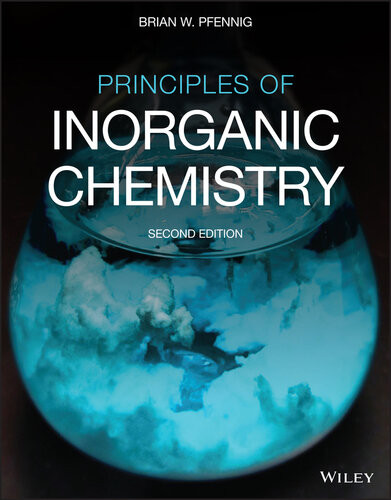

Most ebook files are in PDF format, so you can easily read them using various software such as Foxit Reader or directly on the Google Chrome browser.
Some ebook files are released by publishers in other formats such as .awz, .mobi, .epub, .fb2, etc. You may need to install specific software to read these formats on mobile/PC, such as Calibre.
Please read the tutorial at this link: https://ebookbell.com/faq
We offer FREE conversion to the popular formats you request; however, this may take some time. Therefore, right after payment, please email us, and we will try to provide the service as quickly as possible.
For some exceptional file formats or broken links (if any), please refrain from opening any disputes. Instead, email us first, and we will try to assist within a maximum of 6 hours.
EbookBell Team

4.8
64 reviewsDiscover the foundational principles of inorganic chemistry with this intuitively organized new edition of a celebrated textbook
In the newly revised Second Edition of Principles of Inorganic Chemistry, experienced researcher and chemist Dr. Brian W. Pfennig delivers an accessible and engaging exploration of inorganic chemistry perfect for sophomore-level students. This redesigned book retains all of the rigor of the first edition but reorganizes it to assist readers with learning and retention. In-depth boxed sections include original mathematical derivations for more advanced students, while topics like atomic and molecular term symbols, symmetry coordinates in vibrational spectroscopy, polyatomic MO theory, band theory, and Tanabe-Sugano diagrams are all covered.
Readers will find many worked examples throughout the text, as well as numerous unanswered problems at varying levels of difficulty. Informative, colorful illustrations also help to highlight and explain the concepts discussed within.
The new edition includes an increased emphasis on the comparison of the strengths and weaknesses of different chemical models, the interconnectedness of valence bond theory and molecular orbital theory, as well as a more thorough discussion of the atoms in molecules topological model.
Readers will also find:
With its in-depth boxed discussions, this textbook is also ideal for senior undergraduate and first-year graduate students in inorganic chemistry, Principles of Inorganic Chemistry is a must-have resource for anyone seeking a principles-based approach with theoretical depth. Furthermore, it will be useful for students of physical chemistry, materials science, and chemical physics.